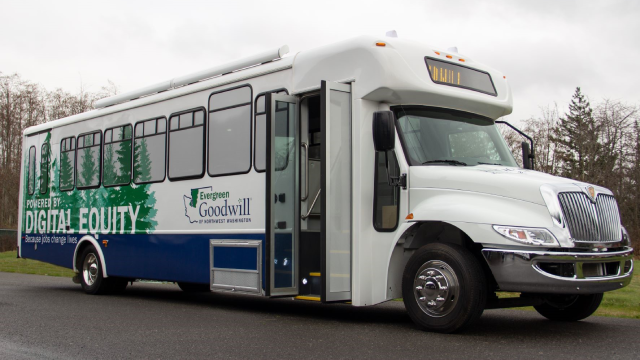Early smart city programs consisted of a limited number of participants and technologies. Many were top-down efforts that emphasized using technology to help city systems operate more efficiently. Now the smart cities movement is evolving from the technology-centric focus of Smart Cities 1.0 to the citizen-centric focus of Smart Cities 2.0. A big part of this shift is collaboration across sectors, solution providers, citizen groups, technology companies and consultants, academic institutions, industry groups and financiers to solve urban challenges by figuring it out together.
Partnering for Progress
Why is this collaboration happening? Because the challenges smart cities seek to solve are too complex to be left to a few players, and too interdependent to be addressed in a piecemeal fashion. There is no single model for how these groups come together, but one successful approach is having a coordinating non-profit entity orchestrate for results-driven smart city collaborations.
Cleantech San Diego and their initiative, the San Diego Regional Energy Innovation Network, is a great example. In this network, businesses that are developing energy technologies can connect with industry partners to accelerate their solutions and address the region’s energy challenges. The initiative helps businesses test their solutions, find funding, and launch their technologies to build more sustainable, resilient cities.
Utilities and the Smart City
Energy innovation is at the heart of the smart city. The electric sector is undergoing its own transformation as utilities modernize their grids, empower their customers, and integrate new market participants, business models and technologies. Investing in a smart electric grid is a top smart city priority for municipalities, governments, and smart services providers.
Utilities can facilitate connected cities by leveraging their grid technologies. CPS Energy is a frontrunner in this way. Through Advanced Metering Infrastructure and other grid modernization initiatives, CPS is connecting customers to energy efficiency technologies for greater control and savings. They are also embracing the distributed future by finding ways to integrate solar, electric vehicles, and energy storage into a more flexible, responsive grid. More broadly, CPS Energy’s network may be used as an Internet-of-Things platform that can support a growing number of smart city applications for a more sustainable, enhanced quality of life across neighborhoods.
Innovation Beyond Technology
Financing options and business models are morphing to better support the cash-strapped smart evolution. The 2017 SDR report shows that Public Private Partnerships (P3) was surveyed as the No. 1 most promising model for financing smart city initiatives, and for good reason. We are seeing exciting P3 models emerge, such as ad-funded smart street kiosks. These kiosks are owned and managed by private sector groups while serving city goals for public safety, citizen engagement, traffic management, and digital equity.
With the financing hurdle cleared, cities can dream big. To boost progress, ecosystem partners are coming together to develop smart city roadmaps that define how to deliver on the smart vision. The 2017 SDR report also showed that more than half of respondents said they were creating roadmaps for their smart city initiatives.
Analytics-based planning tools can help cities compare the costs, benefits and risks of many project options against multiple scenarios and stakeholder objectives. This results in a prioritization of capital projects and programs that can be shared and adjusted with different stakeholder groups and ecosystem partners.
Connecting the Dots for Smart Results
Through information sharing and collaboration, industry stakeholders understand, integrate and manage innovative and sometimes disruptive technologies, such as rooftop solar, energy storage and electric vehicles. While distributed energy resources (DER) can help reduce greenhouse gas emissions and put sustainability goals within reach of cities, they can also destabilize the grid if left unplanned and unmanaged.
As we have seen in integrated planning programs with utilities in California and Hawaii, connecting the dots between technologies and approaches yields smart results. As cities define their own ambitious renewable energy goals and mandates, collaboration with utilities becomes critical to integrate DER in balance with utility infrastructure and operation. Utilities are studying DERs by using data-driven planning to understand the potential combined impact of a broad set of DERs on the grid in order to drive system upgrades and modify rates, customer engagement programs and operations.
On-the-Ground Deployment and Operation
Just as important as strategic planning is on-the-ground deployment. Innovative pilot projects are being stimulated by academic institution-city ecosystem partnerships, such as the MetroLab Network, which attempts to bridge the gap between R&D and commercial-scale solutions. Initiatives such as the National Institute of Science & Technology’s (NIST) Global Cities Team Challenge are bringing together teams of ecosystem partners to design and implement smart city projects in the field.
Beyond the pilot stage, city plans have to scale to meet real-world deployment and operation. Ecosystem partners answer this call by creatively merging innovative technologies and programs with experience in large-scale distributed infrastructure deployment and a scalable data management and analytics infrastructure. This is where private sector program management and integrator skills are invaluable. Traditional project management does not suffice. What’s needed is “live” system management that combines live project status and geospatial data to provide ongoing digital dialogue between projects, programs, stakeholders and circumstances.
Ecosystems Enable Smart Cities
To enable successful smart city programs, the ecosystem of smart city players has evolved into a collaborative community of leaders that blends top-down vision and community-led innovation. Through cooperation and innovation in technology, financing, and strategic integration of all the moving parts and players, cities are scaling towards true sustainability.








